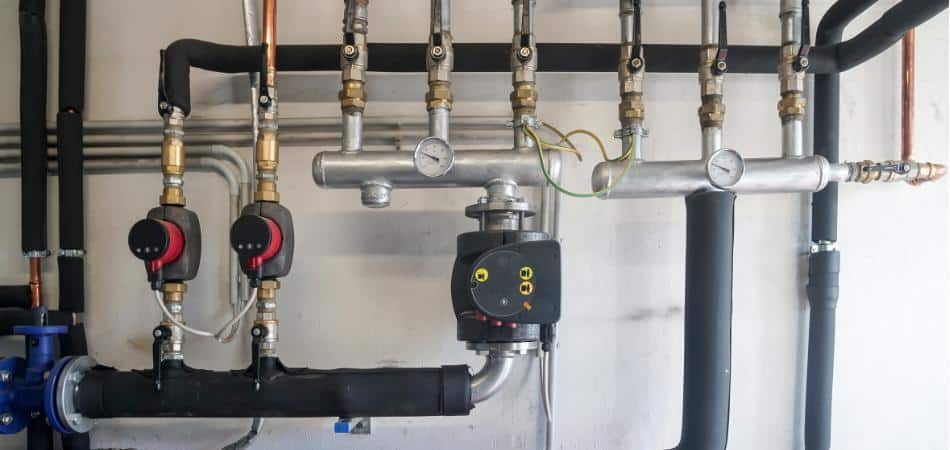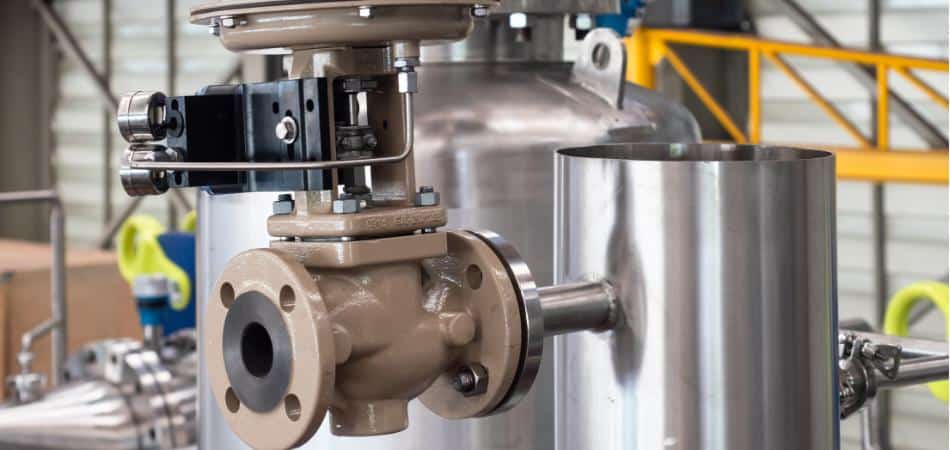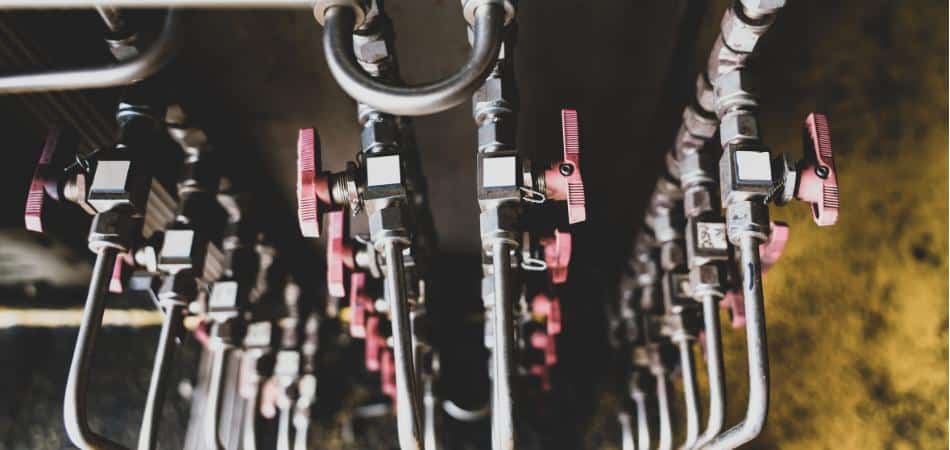There is a wide variety of different valves in our store. In general, different valves serve their purpose. Some valves are used for gas and liquid control. Others are used to control pressure or even gases and liquids.
Controlling fluid/gaseous flow has existed for centuries in many forms. However, we specialize in creating high-quality valves for valve distributors and buyers on an industrial level.
Among the various valves, there is a Modulating valve. This valve aids in diverse industrial mechanisms. In this blog post, we’ll learn how Modulating Valve works and what it is. Without further ado, let’s begin!
What is a Modulating Valve?
Modulating valves differ from traditional household valves. They are not limited to opening and closing valves, such as on/off valves. Instead, they offer a more comprehensive range of flow control for both liquids and gases. Valve manufacturers design modulating valves significantly to aid in precision adjustments.

A Modulating Valve is an industrial control valve that controls flow continuously by adjusting its opening based on a control signal.
Defining Modulation
Regarding automation valves, modulation is a continuous change of the valve’s opening percentage. It’s directly connected to a control signal. This control signal is an electronic or pneumatic signal received by the aid of a process controller. The extent of opening of the valve is dependent on the control signal. This allows a fine-tuned control of the flow rate in any industrial system according to the requirements.
How Modulating Valve Works?
We know a Modulating Valve is a valve used to fine-tune and control the flow of air or liquid through a pipe. It has various uses.

For example, it’s also used in HVAC systems, heating, ventilation, and industrial process control. But how do they exactly work? And what’s the process of adjusting the flow rate like? Here’s how a modulating valve works:
Actuation
The first step is actuation. This is moving the valve stem or plunger to the desired position. There are a number of different ways to actuate a modulating valve, including using a motor, a solenoid, or a diaphragm.
Positioning
Once the valve stem or plunger has been moved, it needs to be positioned accurately. This is done by a feedback mechanism, which compares the actual position of the valve stem or plunger to the desired position. The feedback mechanism then signals the actuator to make any necessary adjustments.

Flow Control
The valve stem or plunger’s position determines the flow through the valve. When the valve stem or plunger is fully open, there is a clear path for the fluid or gas to flow through. As the valve stem or plunger is moved closer to the closed position, the flow path becomes more restricted, and the flow rate decreases.
Digital Positioning System
The need for a Digital Positioning System for electric valve actuators, which usually carries out modulating control, is sometimes referred to as DPS. Modulating valves have the ability to detect and position themselves anywhere between the closed and fully open positions (i.e., between 0 ° and 90 °). Therefore, these chips will be suitable for applications that need to vary flow rates. The modulation process is usually done through a control loop system, and a PCB set on the actuator is used.
This is achieved through a feedback mechanism where a sensor detects the desired position at the input shaft and then compares it to the actual position of the output shaft. The current location of the output shaft is given back to the PCB board by the potentiometer, which is driven by the output shaft itself.
Finally, the error correction board examines both positions and if there is a difference, it sends an error message. The control subsystem will operate the valve until the target position is reached (under a toleration band) to provide correction. The control signal can be either 0-10 V DC voltage or 4-20 mA, which means that 0 V DC or four mA completely closes the valve while 10Vdc or 20 mA would open it fully. A signal from any one of them would always cause the other’s partially closed or opened position. For instance, a 6mA signal may correspond to a 12° turning.
Applications
One of the applications that is very much dependent on the practice of modulation is found in HVAC systems. Suppose the right value of the input temperature is not equal to the actual temperature. In that case, the actuator will open or close the valve more to increase or decrease the conditioned fluid or air flow rate.
Why Modulating Valves are Used
Modulating valves are an essential component in many control systems. They allow for precise control of flow rates, which is important for maintaining a system’s efficient and stable operation.
Here are some of the benefits of using modulating valves:
- Precise control of flow rates
- Improved efficiency
- Stable operation
- Reduced wear and tear on pumps and other equipment
Modulating control valve selection is a critical process. The industrial system could collapse if a suitable modulator valve is not chosen. For this, let’s first understand the types of modulator valves that provide automated flow control solutions by quality-focused valve manufacturers.
Types of Modulating Valves

Modulating valves are divided into two distinct types. Both of these possess different mechanisms. They are each manufactured to be used in different industrial processes. The two types are:
- Modulating Butterfly Valve
- Modulating Ball Valve
1. Modulating Butterfly Valve
Butterfly valves have a generally good flow control feature. With the introduction of a modulating actuator to these valves, the valve can adjust the flow even more precisely. It comprises partial stroke valve operation. The actuator will be installed to the valve through the stem. The angle at which the disc will be rotated will be chosen between 0° and 90°. This translates to a valve that is best for a linear flow control mechanism.
2. Modulating Ball Valve
Ball valves are not normally designed for flow control applications. Consequently, the incorporation of a modulating actuator is what distinguishes ball valves from general applications. Nevertheless, the adjustments would be necessary to fit in with its purpose of flow control. These modifications may include incorporating a V-port ball or trim disc to adjust the flow. Ball valves with actuators are usually involved in vacuum applications.
FAQs
Here is a set of queries that modulating valve manufacturers and distributors frequently ask:
What is the difference between a regulating valve and a modulating valve?
Modulating valves allows you to change the valve’s position to control the flow rate. It can be anywhere between 0° and 90°. So, modulating valves aids in adjusting the flow rate. On the other hand, regulating valves are used to adjust other elements of flow. It can adjust temperature, level of liquid, and concentration.
What is the difference between a balancing valve and a modulating valve?
A modulating valve controls the flow rate to a terminal upon the signals. These signals originate from a controller. A balancing valve limits the flow to each terminal according to the requirements. For example, a modulating valve sends fluid to three terminals. A balancing valve will give them equal or set amounts per the system.
What are 2-way and 3-way modulating valves?
2-way and 3-way valves are quite different from each other. A 2-way valve has two ports. It facilitates the flow through an inlet (A) and an outlet (AB). It observes flow in only one direction. A 3-way valve has three ports. These are A, B, and AB. This type of valve lets an element flow in two directions, unlike 2-way valves.
What is the best valve for modulating flow?
Modulating Ball Valve is the best control valve for process application and modulating flow. It can accurately assess and adjust the flow rate of an element. They are widely used in many industrial process controls. They also have uses in ventilation, heating, and HVAC systems.
Conclusion
To conclude, the working of modulating valves is an easy-to-understand process. A unique signal is sent via a controller. This signal determines the opening and closing of the valve. It also suggests the extent of opening and closing from 0° to 90°.
Lastly, there are two types of modulating valves. Butterfly Valve and Ball Valve. The real question arises: who manufactures these valves? And where can you find the best quality valves? The answer is simple. Put an end to your endless search! Contact us at Plumberstar today to book your quote.
